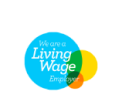Do you find that parts of your organisation look a little like a web build agency? Maybe that's OK. If you're not sure though, it's worth asking yourself if that's the only way to support your marketing web estate and understand the true costs behind it.
There are lots of good reasons why brands bring creative and strategy in-house. Organisations like the In-House Agency Forum are in place to help your internal creatives excel. And certainly the trend to bring key strategic skills in-house seems to be gaining momentum, if anything.
But, have you found that when your creative came in-house, some other things came through the door you didn’t expect? Or have you unintentionally over the years built up your own internal web platform agency?
Is an internal web build agency a “bad thing”?
Not necessarily so, but one brand survey found internal agencies often lacked adequate resourcing, whilst 82% were looking regularly for outside skills. So, you may want to balance your internal and external resources.
In-house agencies can often struggle to scale when required, and inversely carry cost during lean times. Many brands would like to keep brand strategy, creativity and marketing strategy in-house - and a level of technology architecture, though.
Also, running a properly useful agency isn’t easy. It takes time, investment, passion, commitment, and a certain degree of obsession. Take one single aspect of agency life: resource planning. This one activity takes up huge focus in most agency environments as specialist skill-sets working across multiple work streams need to be co-ordinated in strict sequence for any given outcome. Agencies specialise in getting these planets to align and hire people with focused experience to manage it. Multiply that by research and development (Do you want to run your own hack days? Tech sector events? Skunkworks etc), training, culture, career progression, recruitment, retention…
How it happens
Brands often don't intend to create an internal web design and build agency, and yet find themselves running, and paying for, something that looks pretty much like one. As marketing requirements change and so external skill sets need to be brought in to support specialist activities. First one or two people, then gradually increasing the team and costs.
We find consistent themes and conversations which leads to the inset of an internal web agency:
- “By the time we have briefed our agency, or IT function, the opportunity has passed.” A level of close-coupling between marketing strategists, marketing operations and delivery people is often required. A campaign might speed through (relatively speaking) strategy and creative execution, only to halt at the publishing phase when technical implementation is required on the Dotcom. Brands seek to create a muscle-memory between functions for effective ‘end-to-end’ delivery.
- “The dotcom doesn’t do what we need” Marketers with specific geographical audiences, or targeting market segments, need agility to test-and-learn within those segments. The dotcom can sometimes be a barrier to this, however efficient and well governed it is from a security, stability and procurement point of view. So marketers seeking to be agile can sometimes end up developing parallel capabilities to overcome tech inertia.
- “We’d rather do it ourselves than with an agency that doesn’t get it.” This is a heartfelt cry. Sometimes its through a ‘not-invented-here’ ethos, but just as often its the need get things done in lean environments. Traditional web design and build agencies sometimes fail to empathise with this - and overlay their own processes too crudely. For marketers, this can feel like an opaque process that holds them at arm’s-length.
At the end of the day, marketers are people trying to get things done.
Who’s BoB?
So what does Best of Both look like?
- The gap is a publishing platform that is flexible enough not to require developer intervention each time a campaign goes live, gives marketers and creatives direct access to powerful editing and publishing capabilities, lets marketers focus on diverse audience segments, while still keep compliance, infosec, and procurement functions on side.
- The web publishing platform really must be capable of delivering against as yet unknown content requirements. The one thing we know is that marketers and creatives will continue to evolve their messaging and optimise their content. Needing a developer to do this each time, even in the age of the CMS, slows communication down. Our platforms should be low-code and usable by non-technical editors, safe in the knowledge that their output will be correctly branded and have baked-in usability, accessibility and search visibility standards.
- And there is a question mark around who does the platform execution. This is where some brands end up own web build agencies. Ultimately they might be better served by a solution that allows them to create a highly flexible publishing platform, built by specialists that _only_ do that. But the result should be completely own-able by the brand.
Ultimately, we are all seeking to find ways to reduce the cost of trying new messaging, apply learnings, extending reach, and developing strategies for increasing engagement.
The more marketers and their creative teams can do themselves on their web platform, the more a brand focuses on content, message and customer. Technology should enable, not get in the way of this. I’m sure you won’t be surprised that we have some opinions on how to do this.






